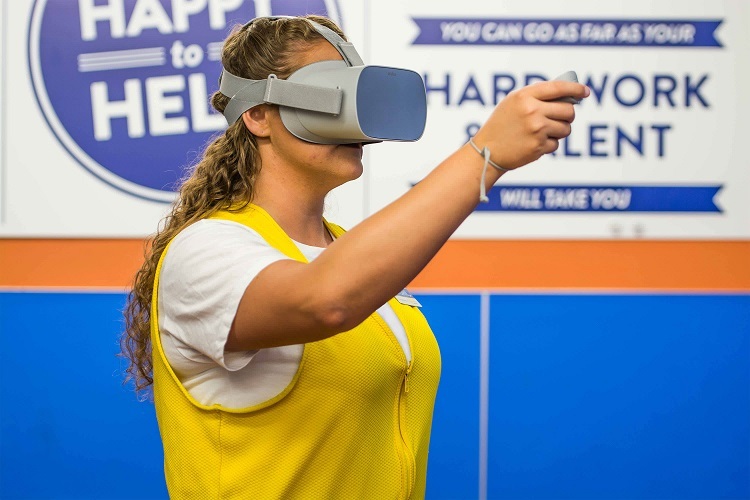Using VR to train employees is rapidly gaining momentum. This method allows you to immerse yourself in any situation that employees may encounter on their way.
Just one mistake of an employee can harm the entire company, its finances or its reputation. The consequences can be different: from a negative opinion about the company’s work on social networks to the death of a person at work. Learn how VR can alert you to these situations in this article.
It should be noted that companies around the world are increasingly using virtual reality to provide a significant improvement in the learning process. This allows you to create an accurate simulation of situations faced by staff. The greatest interest was shown in the high-risk industries: energy, construction, industrial production.
VR is very popular in medicine for the training of specialists. American hospitals are already actively using virtual reality devices to train doctors. In particular, both beginners and practitioners learn using augmented reality to work in situations that are difficult to simulate in real life.
New skills are assimilated up to 500% faster, and the use of virtual reality devices can create real memories rather than abstract knowledge that must then be learned in practice.
Virtual reality is also effectively used for training in the aerospace and maritime industries. Previously, training required expensive equipment and intensive supervision, but VR simplifies the process and minimizes costs.
The VR learning trend is growing rapidly, despite the fact that technology is still at the beginning of its journey. Many training programs are in the early stages of implementation and there is great potential to expand training for enterprises in areas such as tourism and marketing.
Modern VR technologies enable the design of a new world, the imitation of standard and unusual situations with full human immersion during events, which is especially important when developing crisis situations. Actions in emergency situations are processed automatically and reliably stored in the employee’s memory. Due to the presence effect, the person deeply assimilates the information and gains real hands-on experience.
Advantages of VR-based training technology:
- greater involvement of employees in the process, the possibility of changing scenarios, influencing the course of events;
- full concentration on learning due to the lack of external stimuli;
- high visibility – using VR technology, you can show any process, both holistic perception, and simulate any degree of detail;
- application flexibility – development for specific teaching tasks.
It is easy to introduce VR to any company and derive tangible benefits from it.
One of the best uses of VR training is scenario-based exercises. The person is completely immersed in a working atmosphere in which he can encounter difficulties and solve the problem before it becomes a reality. Now this technology is being used more and more, and it saves a lot of time because a living example is much more interesting than sitting with books or listening to boring lectures.
HTC VIVE Business Edition VR System goggles and Vuzix m300 smart glasses as hardware, and agencies such as mazerspace.com as software are now the best options that you can use for staff training. Using virtual reality is therefore one of the most successful ways to improve employees’ skills in a short time.









